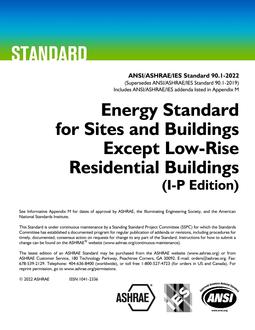Posted by Johann Nacario — March 15, 2024 —Global building technology society ASHRAE received a determination issued by the U.S. Department of Energy (DOE) stating that ANSI/ASHRAE/IES Standard 90.1-2022, Energy Standard for Sites and Buildings Except Low-Rise Residential Buildings, will increase energy efficiency in commercial buildings subject to the code.
The standard achieved this determination through the DOE’s technical analysis estimating that buildings meeting 90.1-2022 (as compared to the previous 2019 edition) would result in a national average site energy estimate savings increase from 9.8% to 14% (reference as “net” savings).
2023-23 ASHRAE President Ginger Scoggins, P.E., Fellow ASHRAE, stated:
With the intensified demand for decreased energy consumption and carbon reductions in existing buildings, Standard 90.1 continues to offer essential guidance in shaping building regulations and amplified energy legislation. The DOE’s latest determination further solidifies Standard 90.1 as the cornerstone for achieving energy efficiency goals and ultimately moves us closer towards widescale, global building decarbonization of the built environment.
The following are DOE’s estimates of national savings in commercial buildings:
- 9.8% site energy savings
- 9.4% source energy savings
- 9.3% carbon emissions savings
Standard 90.1-2022 marks the first time onsite generation of renewable energy systems is incorporated as a prescriptive requirement of the standard, recognizing the role of renewables in new construction, echoing similar requirements in several state and local building codes and better positioning new commercial buildings to achieve net zero energy in the future. Other key changes include customizable energy credits, a new mechanical system efficiency performance option, requirements to address thermal bridging, expanded criteria for whole-building air-leakage testing, updated lighting power allowances, and additional guidance for using emissions in addition to traditional site, source and cost-based metrics.
States are required to certify within two years of DOE’s affirmative determination that the provisions of its commercial building code regarding energy efficiency have been reviewed and, as necessary, updated codes to meet or exceed the updated edition of Standard 90.1.
Learn more about DOE’s model energy code determination, including specific requirements and deadlines, at: Energy codes.





